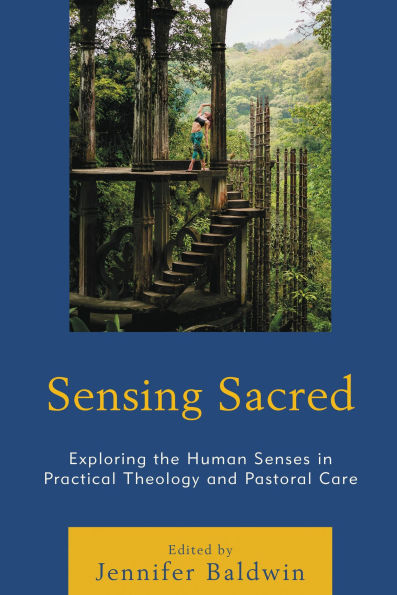Sensing Sacred is an edited volume that explores the critical intersection of “religion” and “body” through the religious lens of practical theology, with an emphasis on sensation as the embodied means in which human beings know themselves, others, and the divine in the world. The manuscript argues that all human interaction and practice, including religious praxis, engages “body” through at least one of the human senses (touch, smell, hearing, taste, sight, kinestics/proprioception). Unfortunately, body—and, more specifically and ironically, sensation—is eclipsed in contemporary academic scholarship that is inherently bent toward the realm of theory and ideas. This is unfortunate because it neglects bodies, physical or communal, as the repository and generator of culturally conditioned ideas and theory. It is ironic because all knowledge transmission minimally requires several senses including sight, touch, and hearing. Sensing Sacred is organized into two parts. The first section devotes a chapter to each human sense as an avenue of accessing religious experience; while the second section explores religious practices as they specifically focus on one or more senses. The overarching aim of the volume is to explicitly highlight each sense and utilize the theoretical lenses of practical theology to bring to vivid life the connections between essential sensation and religious thinking and practice.
1124508242
Sensing Sacred: Exploring the Human Senses in Practical Theology and Pastoral Care
Sensing Sacred is an edited volume that explores the critical intersection of “religion” and “body” through the religious lens of practical theology, with an emphasis on sensation as the embodied means in which human beings know themselves, others, and the divine in the world. The manuscript argues that all human interaction and practice, including religious praxis, engages “body” through at least one of the human senses (touch, smell, hearing, taste, sight, kinestics/proprioception). Unfortunately, body—and, more specifically and ironically, sensation—is eclipsed in contemporary academic scholarship that is inherently bent toward the realm of theory and ideas. This is unfortunate because it neglects bodies, physical or communal, as the repository and generator of culturally conditioned ideas and theory. It is ironic because all knowledge transmission minimally requires several senses including sight, touch, and hearing. Sensing Sacred is organized into two parts. The first section devotes a chapter to each human sense as an avenue of accessing religious experience; while the second section explores religious practices as they specifically focus on one or more senses. The overarching aim of the volume is to explicitly highlight each sense and utilize the theoretical lenses of practical theology to bring to vivid life the connections between essential sensation and religious thinking and practice.
48.59
In Stock
5
1

Sensing Sacred: Exploring the Human Senses in Practical Theology and Pastoral Care
206
Sensing Sacred: Exploring the Human Senses in Practical Theology and Pastoral Care
206Related collections and offers
48.59
In Stock

Product Details
| ISBN-13: | 9781498531245 |
|---|---|
| Publisher: | Bloomsbury Publishing |
| Publication date: | 08/30/2016 |
| Series: | Studies in Body and Religion |
| Sold by: | Barnes & Noble |
| Format: | eBook |
| Pages: | 206 |
| File size: | 2 MB |
About the Author
From the B&N Reads Blog
